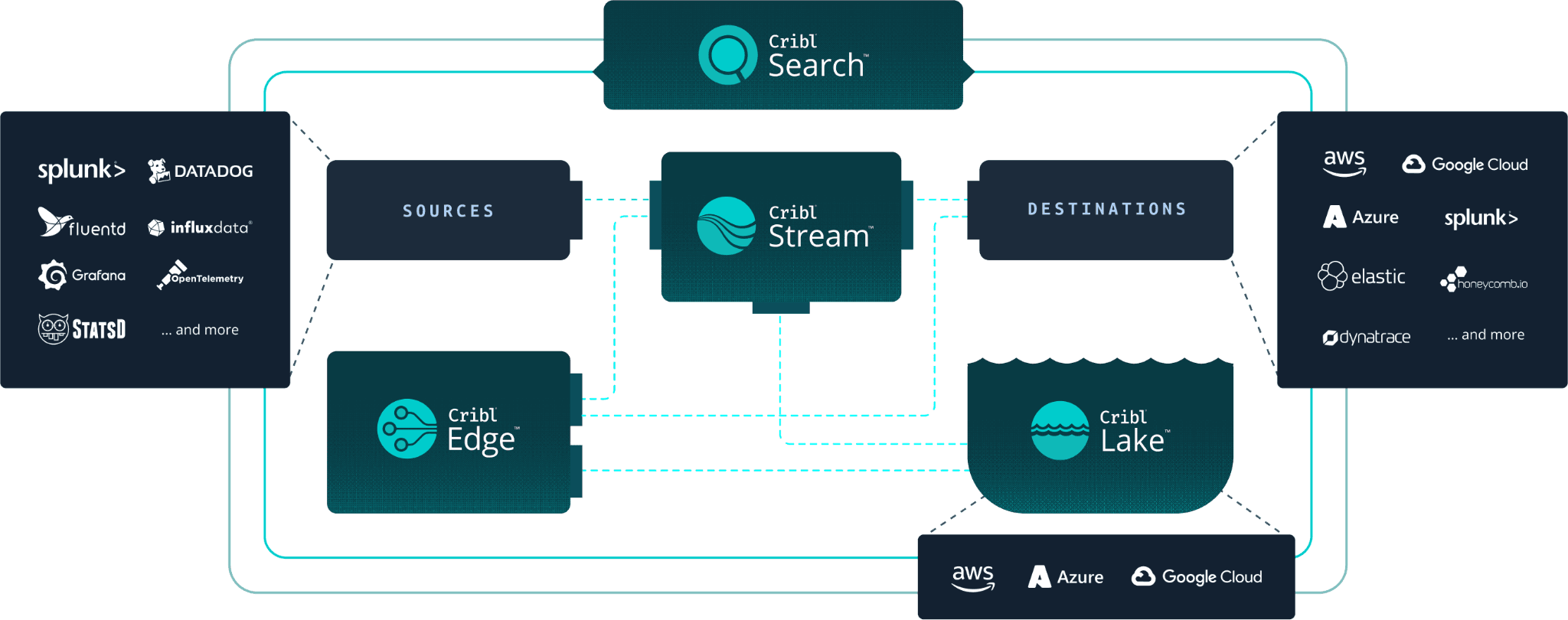In modern IT environments, logging has become an integral part of application development and operations. Logs, metrics, and traces allow organizations to alert on events, monitor performance, and troubleshoot issues effectively. However, as applications scale and generate an increasing volume of logs year over year, managing them efficiently becomes a daunting task for engineering teams and budget makers.
The Challenges of Verbose Application Logging
As applications generate more and more log data, storing and analyzing every individual log becomes impractical and costly. The traditional approaches of centralizing all application logs in indexed storage or using generic data processing pipelines leads to increased operational overhead and reduced agility.
Moreover, not all logs are created equal. While some logs contain critical information vital for troubleshooting and performance monitoring, others may be less relevant or redundant. Without proper log management strategies in place, organizations risk drowning in a sea of irrelevant data, hindering their ability to extract actionable insights efficiently.
Lastly, at the heart of this issue is the simple fact that logging-related changes made at the application level can take weeks or even months to implement. Application developers are consistently tasked with feature-focused deliverables that have a direct impact on the organization’s mission. Because of that, change requests around application logging are often assigned lower criticality and take a backseat for future releases.
Cribl’s portfolio of products eases the burdens of application log management by offering sophisticated filtering, smart data routing, and pipelining— making sure that only relevant logs use up valuable storage and compute.
A New Approach with Cribl
Cribl Stream enables organizations to intelligently route logs to appropriate destinations based on their contextual importance and operational relevance, making storage costs lower and data analysis faster. Low-fidelity logs can be sent directly to low-cost storage for data retention requirements and historical analysis, while actionable events can be sent in easy-to-digest formats and volumes.
Cribl offers a range of strategies for log prioritization, allowing organizations to tailor their log management workflows to their specific needs and requirements. Some common strategies include:
Content and Metadata-Based Routing: Cribl Stream can analyze raw log content and route logs based on predefined keywords, patterns, or metrics. Additionally, it can leverage metadata extracted from logs, such as timestamps, source IPs, or user agents. This allows organizations to prioritize logs containing critical error messages, performance metrics, or security events for immediate analysis while filtering out less relevant logs.
Log Consolidation: Events can be aggregated, suppressed, or sampled before being sent to an analysis system. This reduces the overall volume of events while maintaining the fidelity of the data set. Application logs can also be further transformed to more consumable formats (JSON, key-value pairs, etc.) to avoid custom parsing rules on the end destination.
Logs to Metrics: Cribl Stream can accept raw logs and reformat to metrics formats that are more performant for destinations. By converting verbose log data into condensed metrics formats (StatsD, CollectD, etc.), Stream helps monitoring systems run better, cuts down on storage needs, and speeds up real-time monitoring.
Example

Rolling In Cribl Lake and Cribl Search
Cribl Stream is at the heart of the strategies mentioned above, and gives IT and security teams the ability to send application logs to one or many destinations in the format and in the volume that makes business sense for those tools. What if the tools you want to send to aren’t implemented yet? Or what if the existing platform is simply too cost-prohibitive to send these logs to? Cribl Lake is here to help!
Cribl Lake is an all-in-one data lake solution designed for ease and efficiency. It allows organizations to store, manage, access, replay, and search data effortlessly, without needing specialized cloud expertise. Available in Cribl.Cloud, users can simply set up new datasets and start routing their application log data from Cribl Stream directly into Cribl Lake. No need to provision a ton of infrastructure or create complex access control policies. Plus, this solution is pennies on the dollar cheaper than traditional indexed storage.
But wait, there’s more!
That data doesn’t just go to Cribl Lake and live in a vault until it ages out. Through Cribl Search, all of the events that are sent to Cribl Lake are fully available to ask point-in-time questions of and extract insights from. Datasets created in Cribl Lake are ready for immediate searching.
And it’s not just Cribl Lake that Cribl Search can query. With its search-in-place architecture, Cribl Search can point to where data already exists at rest, whether that’s in cloud-based object storage (AWS S3, Azure Blob, GCP) or through API endpoints. Think about that: If application logs are accessible to Cribl Search through one of these mechanisms, teams could bypass forwarding them altogether and still gain valuable insights with schema-on-the-fly searching.
The data that an organization’s applications generate, while valuable, can be complex and difficult to manage at scale with IT budgets as a constraint. The Cribl suite of products offers those teams choice, control, and flexibility over their logs, helping them maximize their data’s value.

Putting It All Together
To wrap up, verbose application logging presents significant challenges for organizations, including storage costs and analysis overhead. Cribl offers cost-effective solutions by enabling organizations to intelligently route logs based on their importance and relevance, optimizing storage costs and analysis efficiency. Furthermore, the full portfolio of products offers customers flexibility on where to store application logs and how to analyze them.
Ready to take a look for yourself? Try one of our Sandbox environments to see how Cribl can save your team time and money!








